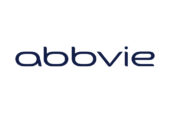Sales Enablement

The Appleton Greene Corporate Training Program (CTP) for Sales Enablement is provided by Mr. Oluwole Certified Learning Provider (CLP). Program Specifications: Monthly cost USD$2,500.00; Monthly Workshops 6 hours; Monthly Support 4 hours; Program Duration 12 months; Program orders subject to ongoing availability.

Personal Profile
Mr. Oluwole, MBA, is a Certified Learning Provider at Appleton Green. He has strategic sales leadership experience in B2C and B2B sales for businesses focused on services, products and/or technology. In the course of his experience over the last 2 decades, he has successfully helped mid to large sized enterprises significantly improve and increase their sales by as much as 10X initial sales figures.
In addition to his strategic sales leadership experience, he also has hands-on experience working in key sales functional areas include core sales, business development, marketing, sales operations, customer services and sales enablement. This deep and wide perspective gives Mr. Oluwole an optimum blend of strategic foresight and practical relevance needed for making a sales organization function like a well-oiled machine.
Over the years of working either as a consultant, a board director or as a member of senior leadership teams, Mr. Oluwole has consistently helped these organizations achieve and surpass sales goals while improving their overall sales culture; as demonstrated by higher team member experience and retention results.
Working across 3 continents – Africa, Middle East, and North America, Mr. Oluwole has gained industry experience within the following sectors: healthcare, management consulting, technology, financial services, and telecommunications. He has also been privileged to work in the sales and business development functions of global firms such as Deloitte & KPMG.
Mr. Oluwole is a firm believer the people are the only sustainable source of competitive advantage for any organization, and he has dedicated over 20 years of his life to enabling people demonstrate the required knowledge, skills and behaviours needed to realize their potentials and help their organizations prosper.
As a certified trainer and executive coach, he is able to effectively design programs that effectively enlighten participants but also shift their mindsets to create new and better ways of working. A notable trademark of his programs are the high engagement rate and high impact rates that participants report during and after the program.
In addition to his professional leadership experience, he is also an active mentor, teacher, and community leader, consistently finding ways to help people experience their full potentials.
To request further information about Mr. Oluwole through Appleton Greene, please Click Here.
(CLP) Programs
Appleton Greene corporate training programs are all process-driven. They are used as vehicles to implement tangible business processes within clients’ organizations, together with training, support and facilitation during the use of these processes. Corporate training programs are therefore implemented over a sustainable period of time, that is to say, between 1 year (incorporating 12 monthly workshops), and 4 years (incorporating 48 monthly workshops). Your program information guide will specify how long each program takes to complete. Each monthly workshop takes 6 hours to implement and can be undertaken either on the client’s premises, an Appleton Greene serviced office, or online via the internet. This enables clients to implement each part of their business process, before moving onto the next stage of the program and enables employees to plan their study time around their current work commitments. The result is far greater program benefit, over a more sustainable period of time and a significantly improved return on investment.
Appleton Greene uses standard and bespoke corporate training programs as vessels to transfer business process improvement knowledge into the heart of our clients’ organizations. Each individual program focuses upon the implementation of a specific business process, which enables clients to easily quantify their return on investment. There are hundreds of established Appleton Greene corporate training products now available to clients within customer services, e-business, finance, globalization, human resources, information technology, legal, management, marketing and production. It does not matter whether a client’s employees are located within one office, or an unlimited number of international offices, we can still bring them together to learn and implement specific business processes collectively. Our approach to global localization enables us to provide clients with a truly international service with that all important personal touch. Appleton Greene corporate training programs can be provided virtually or locally and they are all unique in that they individually focus upon a specific business function. All (CLP) programs are implemented over a sustainable period of time, usually between 1-4 years, incorporating 12-48 monthly workshops and professional support is consistently provided during this time by qualified learning providers and where appropriate, by Accredited Consultants.
Executive summary
Sales Enablement
As a simple definition, sales enablement is anything you can do to help your salespeople close more deals, faster. Although this definition is simplistic, the phrase ‘anything you can do’ is not so simple to implement.
To better understand what ‘anything’ in the sentence above means, consider these more detailed definitions:
Forrester, one of the most globally influential research and advisory firms that uses customer centric insights to help business leaders accelerate growth, defines Sales Enablement as:
“A strategic, ongoing process that equips all client-facing employees with the ability to consistently and systematically have a valuable conversation with the right set of customer stakeholders at each stage of the customer’s problem-solving life cycle to optimize the return on investment of the selling system.”
Gartner, another globally recognized research and consulting firm focused on providing unbiased, rigorously vetted and vendor-agnostic guidance to help business leaders make mission-critical decisions, defines Sales Enablement as:
“The activities, systems, processes, and information that support and promote knowledge-based sales interactions with client and prospects.”
No doubt, sales enablement is fast becoming a mission critical ingredient for the sales function of top performing organizations. Unfortunately, many organizations are not fully clear on what sales enablement means in their context and how they can go about building a fit-for-purpose sales enablement function – we have designed this Sales Enablement Program to help you with these challenges.
This Sales Enablement program has been created to help move your organization’s sales enablement function to the next level, irrespective of the level you may be currently. Designed in modular workshops, this program is intended to firstly understand where you are on your sales enablement evolution journey, then using leading practices and concepts, this program will accelerate your sales enablement function so you can start realizing faster and higher returns on investments in your sales function.
The illustration below shows how sales enablement directly impacts how you meet your sales objectives. The more evolved your sales enablement function is, the higher your chances of meeting and exceeding objectives.
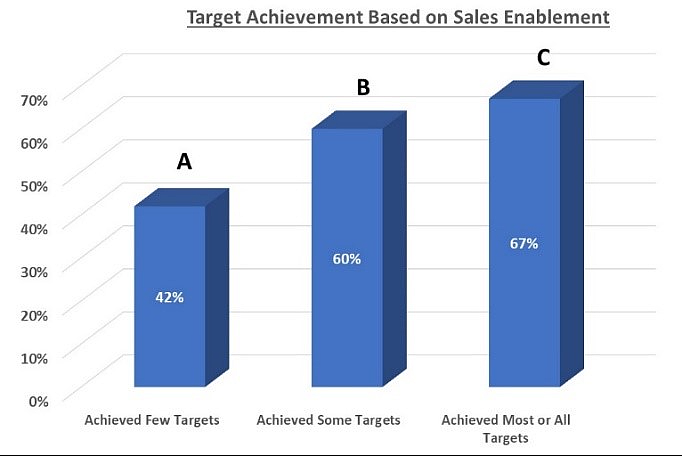
Organizations in Column A have their Sales Enablement function suited for yesterday’s world.
Organizations in Column A have their Sales Enablement function suited for yesterday’s world.
Organizations in Column B, have their sales enablement function designed to meet the demands of today’s world.
Column C refers to organizations with a sales enablement function equipped and ready to excel even with the future of work (tomorrow’s world)
The illustration below describes these 3 levels of evolution of a sales enablement function. A review of this provides you with some initial estimation as to the current level of your sales enablement function.

No matter where your sales enablement function might be at the moment, this Sales Enablement Program is designed to get your sales enablement to align with what is required in today’s world, but more importantly to get you ready for the future. Find below more details on the 3 evolution stages and how this program gets you there.

Sales Enablement for Yesterday’s World
Compared to about 10 years ago, the world in which your salespeople operate today has undergone a lot of change Unfortunately the support that salespeople receive in form of sales enablement has not changed accordingly.
Below are some of the major drivers in which the context of your salespeople has significantly changed:
• Digitalization: coming out of the pandemic, everyone and everything has become more digital, traditional sales processes like cold calling are not as effective as before.
• Global Markets: The pandemic also opened organizations to global markets which is a great opportunity but also a great challenge as many companies have salespeople in various geographic locations as such, providing centralized sales enablement support has become more challenging.
• Changing Buyer Dynamics: – more people are getting involved in the buying process of companies especially for big-ticket B2B deals. Buyers are now more informed due to the internet and now require the salesperson to be more than just a source of information.
• Changing Buying Processes: – these are becoming more formalized because of specialization resulting in longer buying cycles. The buying criteria also keeps growing. In the past selection criteria was mainly down to ability to deliver and cost to deliver. Now, all other factors such as the company’s position on the environment, diversity, equity, inclusion, etc.
With these drivers of change affecting the world of salespeople, it is unfortunate to see that the Sales Enablement Function for many organizations has not evolved in response to these changes. For many of such organizations, support to their salespeople is still being provided on ad hoc basis without any centralized, coordinated process. This ad hoc sales enablement is characterized by flooding the salespeople with a lot of content and training, responding to enablement needs with more content and/or more training or allows sales leaders to buy and deploy the latest fad in sales technology without a harmonizing strategy.
This Sales Enablement Program is designed to help you arrive at that harmonizing strategy so that you are focusing on the sales enablement initiatives that matter the most to your salespeople.
Case Study – Changing Your Sales Enablement Approach in Response to a Changing World
Bayer, a global enterprise in life sciences, healthcare, and nutrition space, historically had its medical sales reps relying on face-to-face interactions with their customers (pharmacy owners) to meet sales targets. Unfortunately, when Covid-19 happened and physical interactions restricted, the team struggled to close sales.
The sales enablement function quickly revised their approach and set up an end-to-end email sales program. They obtained contact details and consent of the pharmacy owners, developed approved email formats that the reps could personalize for their customers. This was then linked with a sales enablement tool that enabled tracking customer engagement with email content (opens, clicks, conversions, content access) to inform continuous improvement of the new approach.
This approach helped the sales reps stay in touch with and effectively engage with 91% of their targeted customers and this helped them achieve their quota during a challenging period for many businesses.
Source: Bigtincan

Sales Enablement in Today’s World
Sales Enablement has become a very trending topic today. If sales leader were to do a Google search right now with the term ‘sales enablement, they will be inundated by the so many options of sales enablement software vendors and firms offering their own version of what they think organizations need. The challenge in today’s world is there is ‘too much information’. Resulting in organizations not being able to effectively identify what works best for them and their organization.
To help you with this challenge, we created this Sales Enablement program. Through this Program, we want to help you avoid the mistake investing in the latest or loudest sales enablement solution which has not been well customized to the unique need of your organization in line with your objectives. When you get into this Sales Enablement Program, we come alongside you to collaboratively understand what your organization needs. In that collaboration, we will bring the leading sales enablement concepts and practices in the industry/market, while you (and your sales leaders) will bring your deep understanding of your business and together we will uncover ground-breaking insights!
These insights will equip us with the understanding we need to help you develop some strategic enablement documents which become the building blocks for your enablement function. Such as your Sales Enablement Strategy & Operating Model and your Sales Enablement Charter, which are tailored to help you meet your specific sales objectives.
The next few months will see us implementing these strategic documents along our 8 Enablement Disciplines – Customer Journey, Value Messaging, Content Management, Training Management, Sales Enablement Technologies, Meetings Framework, Process Improvement & Leadership Development.
These will help you get your Sales Enablement up-to-speed with the latest and greatest in the Sales Enablement in today’s world, but that is not where we stop! We need to help you build for the future as well.

Sales Enablement in Tomorrow’s World
The explosion of Data Analytics, Machine Learning and Artificial intelligence is radically influencing the sales enablement landscape.
Data Analytics is providing more useful insights on the value of content assets and training materials. Helping sales enablement professionals know what about the content is driving the impact such as length of content, mode of delivery, messaging etc. There are tools doing this today and their product roadmaps show they will continue to develop the functionality of their tools in this area.
Machine Learning and Artificial Intelligence is beginning to shape the identification of sales enablement needs. For most organizations today, sales enablement functions obtain feedback on enablement needs from their sales team through surveys, polls, and interviews but in the future, AI will be able to suggest what the team needs enablement on. The are sales recording tools that are already providing sellers with suggested responses to questions from the prospects right there on the call. While other tools are able to analyze sales calls and produce useful insights such as talk to listen ratio, use of open-ended questions, key words repeated by customer etc.
For you and your organization to be at the forefront of the leading sales enablement practices, a solid sales enablement foundation is a non-negotiable requirement. We will be working with you to achieve this during the first few months of this Sales Enablement Program. After laying that foundation, we will work with you to define the Performance & Reporting Frameworks for your sales enablement function. These frameworks will help us align on the success criteria/metrics most relevant for your organization’s maturity level and strategic objectives. These reports then become the basis for leveraging leading sales enablement technologies aligned to your sales objectives. This process of monitoring and reporting also becomes the driver for continuous improvement.
Case Study – Driving Sales Enablement Through Reliable Data Analytics
Abbott, a biotechnology company producing a portfolio of feature products which provide options for treating structural heart disease (SHD), was having challenges evaluating how well their sales team was evaluating the value of their products. Historically, they had relied on the product and clinical training team to equip the sales team, but they had no data or metrics to see how much of this was resonating with the prospects/customers.
To help with this, the sales enablement function rolled out a sales enablement tool that allowed the sales team provide feedback on how the sales content is helping them sell. The feedback was mostly around product messaging, objection handling, and clinical data product positioning. This feedback helped the sales leadership identify coaching opportunities which could also be delivered through video calling in the sales enablement tool.
This way Abbott, was able to receive feedback data on their sales enablement initiatives and use that to refine their future initiatives while being able to demonstrate how the initiatives were helping the sales team sell better. A good example of Sales Enablement built for the future.
Source: Bigtincan
What does this mean for you and your organization?
Looking at the illustration again, where would you say your organization’s sales enablement function is at the moment?

If you are responsible for sales, revenue, business development for your organization and you are wondering, how you can you help your sales team continue to meet and exceed targets in this ever-changing world, this tailored Sales Enablement Program is your answer.
It is not just about having more salespeople; it is more about ensuring the salespeople are well enabled and equipped to meet their sales quota.
It is not just about having more sales and marketing content; it is more about enabling the team to know how to access and use the most relevant content at a given time to advance their customer along the customer’s buying journey.
It is not just about providing more training; it is more about leveraging technology to provide people with access to the specific learning material they need as close as possible to the time when they will use it.
It is not just about buying more tech assets for your sales team, it is more about enhancing the adoption and ensuring seamless integration across, so you are receiving full return on your investments, while leveraging the analytics and AI functionalities to drive continuous improvement.
When you enrol 10 of your leaders/managers who work in a sales related function into this program, they will be equipped with all this content from this Sales Enablement Program. They can then bring all this back into your organization to instil a dynamic sales enablement procedure and culture built for today and the future. This is why you need this Sales Enablement Program.
Curriculum
Sales Enablement – Part 1 – Year 1
- Part 1 Month 1 Enablement Diagnostic
- Part 1 Month 2 Enablement Strategy
- Part 1 Month 3 Enablement Charter
- Part 1 Month 4 Customer Journey
- Part 1 Month 5 Value Messaging
- Part 1 Month 6 Content Management
- Part 1 Month 7 Training Management
- Part 1 Month 8 Enablement Technologies
- Part 1 Month 9 Performance Framework
- Part 1 Month 10 Reporting Framework
- Part 1 Month 11 Leadership Development
- Part 1 Month 12 Continuous Improvement
Program Objectives
The following list represents the Key Program Objectives (KPO) for the Appleton Greene Sales Enablement corporate training program.
Sales Enablement – Part 1 – Year 1
- Part 1 Month 1 Enablement Diagnostic – The wholistic understanding of the Sales Group of an organization and how it is organized and functions, is critical to developing a fit-for-purpose Sales Enablement function. (Sales Group here does not refer to just the sales team but everyone involved in customer-facing activities within your organization, including marketing, business development, partnership, and sales enablement). This diagnostic review of your Sales Group will be an adopted format of the SWOT Analysis model. This provides a simple, yet powerful way to effectively assess the current state and identify opportunities for enhancement. The diagnostic review will cover these key Diagnostic Dimensions: organization structure, workforce numbers, % of sales group meeting/exceeding quota, team culture & dynamics, time to optimum productivity for new hires, feedback on content and training services, enablement technology, and sales pipeline metrics. These metrics are referred to as 5Vs – Volume, Value, Velocity, Variety & Vitality. We will work together to assess the Sales Group along these dimensions and generate a Enablement Diagnostic Scorecard which highlights your organizations current standing along these dimensions in comparison to industry and or desired standards and rated on a 3-point Likert Scale – Below Standards, Meets Standards, Exceeds Standards. For some of these Diagnostic Dimensions, there are industry standards which top players in the industry abide by. In some other cases, your company may choose to go below or above these standards due to some other considerations. We will work with you to define and align on these standards prior to conducting the diagnostic review so we have an objective basis for evaluating performance. Using this scorecard ratings, we will work with you to prioritize these dimensions. The prioritization will inform the key elements and themes that will be incorporated into the development of the Sales Enablement Strategy (Month 2). This scorecard also becomes the basis for evaluating the impact of this program as we progress through the modules.
- Part 1 Month 2 Enablement Strategy – The Sales Enablement Strategy refers to a strategic approach you will be taking to set up and implement your sales enablement function. It consists of both crafting a sales enablement strategy and an operating model for implementing that strategy. Ultimately the sales enablement function is set up to ensure your Sales Group is provided with the content, training, mindset and resources required for them to effectively sell and raise your organization’s topline. The horizon of this strategy will be for the next 2 to 3 years consisting of both what the sales enablement function needs to do immediately and what it would look like in its most ideal state. This sales enablement strategy will also define the main purpose of your organization’s enablement function and how it fits into all the other pillars of your customer facing strategies and organization. Crafting the sales enablement strategy will involve defining the core principles that will guide the activities of your sales enablement function. Examples of such core principles include – customer-centric design, just-in-time content delivery, micro-learning approach, enabling change. The strategy will also contain the high-level measure of success which will be the foundation on which the KPIs and other metrics for enablement function will be defined. On the other hand, designing the operating model of the sales enablement function will involve defining the organization structure where we distinguish the design/development from the service delivery with high-level functional descriptions for each. The Model will also define business process workflows for how the development and service delivery components will work together. Finally, the model will define the people requirements specifying what skills and competencies are required and how many team members are required to deliver for the short, medium and long term. The Sales Enablement strategy will be built through a facilitated workshop designed to engender collaboration and co-creation. The co-creation will be based on the synergy between your strong understanding of your business and our strong understanding of leading enablement practices. This will ensure we are building a Sales Enablement Strategy for now and the future. The sales enablement operating model will be designed through iterative consulting approach. This means we will provide with templates and tools which we will then work with you to update and refine, through a few iterations. This way, we ensure the model aligns with your current and future needs. The goal is to have a future-proof Sales Enablement Strategy and Operating Model. While the strategy will capture both the short and long term aspirations of the sales enablement function, the operating model will ensure we are clear on how to start implementing. The Enablement Model is the interpreter of the Enablement Strategy. It helps interpret the model from a seemingly esoteric, idealistic state to tangible practical terms that provide the basis for developing the Sales Enablement Charter.
- Part 1 Month 3 Enablement Charter – The Sales Enablement Charter is a well-detailed tactical plan for how identified aspects of the Enablement Strategy and Enablement Model will be implemented over the next three to four quarters of the year. The charter contains prioritized initiatives arranged in a roadmap format which specifies when the initiatives will be completed, who will be involved and how it will be implemented. Because the charter has a time horizon of 9 to 12 months, it is expected that it will be refreshed on an annual cycle. The refresh will be based on reviewing the elements that are yet to be implemented in the Charter for that year and other aspects in the Enablement Strategy and Enablement Model, which have not yet been implemented. This approach will ensure the most relevant items from the Strategy and Model are prioritized into the Charter on an annual basis. The Sales Enablement Charter will be built through a facilitated workshop designed to engender collaboration and co-creation. The co-creation will be based on the synergy between your strong understanding of your business and our strong understanding of the ideal sequencing of enablement functions. This will help ensure we are developing a charter that is built-for-purpose to support your sales objectives and plans. We will work with you to develop the Sales Enablement Charter consisting of these 5 main sections ( 5P)s. The first section, Purpose – here we will document the vision, mission, and core principles of the enablement function, extracting relevant sections from the Sales Enablement Strategy and Operating Model. The second section, Process – will focus on the key business processes that will be carried out within the sales enablement function. It will consist of already existing business processes and new ones that need to be included. The approach for this is a simplified process methodology – DDE – Define, Document and Enable. The third section, People – in this section will be defining the people requirements for the next 9 to 12 months including the structure, roles, competencies, and skills required. Priorities. The fourth section Priorities – will detail the initiatives the sales enablement function will be focusing on for the next 9 to 12 months. Specifying the initiatives’ objectives, timelines, who is involved, and how they will be executed. The fifth section, Progress – will define the measures of success for the enablement function (current & desired), how this progress will be measured and to whom it will be reported. This is important in ensuring the value of the enablement function is visible across the Sales Group.
- Part 1 Month 4 Customer Journey – The Customer’s Buying Journey refers to the steps your customers take to identify a challenge (or opportunity), analyze options on how to overcome the challenge (or seize the opportunity), choose an option and implement the chosen options or solution. The methodology we will adopt in developing the Customer’s Buying Journey will be a facilitated workshop designed to engender collaboration and co-creation. The co-creation will be based on the synergy between your strong understanding of your customers and our strong understanding of the key pillars required in developing a fit-for-purpose customer journey. The value in co-creating the customer journey is that begins to engender and reinforce a customer-centric approach to enablement activities. This is intentional as it shifts the focus of enablement from activity based to impact/outcome based, ensuring that everything the enablement function does is aimed at helping the Sales Group advance the customer along their buying journey. The customer buying journey becomes the framework for organizing how the sales enablement activities will be delivered to the Sales Group. For example the enablement activities delivered for customers in the early stages of the buying journey will be different from the activities delivered at the mid or late stage. Aligning the sales enablement activities to the customer buying journey creates a more systematic approach to delivering enablement support to the Sales Group. While we expect each organization’s customer buying journey will differ in some way, we will work with you to ensure we have a minimum of 3 stages and a maximum of 7 stages. This ring-fencing is to ensure the steps in the customer journey have an optimum balance of being broad enough to accommodate unique customer buying journeys but specific enough to guide the delivery of the enablement activities. Once completed, the Customers’ Buying Journey output document will be rolled out across your Sales Group to reinforce the customer-centric mindset.
- Part 1 Month 5 Value Messaging – One of the most effective forms of selling is value selling where key messages and scripts are prepared to enable your Sales Group effectively communicate the value of your products/service to prospects and customers. Obtaining support from your buyer’s executive leadership team and the required financial investment is easier when your buyer understands the value your products and services will deliver to their organization. The Value Messaging is important to enablement because all enablement activities and assets need to be infused with these value messages. All enablement activities and assets for the early stages of a customer’s buying journey need to contain and reinforce the value messages so the Sales Group can effectively communicate this to the buyer. The approach we will adopt for this is a classic consulting approach, using our 4C Framework – Clarity, Consistency, Coverage & Customer Impact. The 4C Framework will be used to review existing enablement activities and assets to assess how well the value messages have been infused into these enablement activities and assets. For Clarity, we will assess how clear the value messages come through in the content of the enablement assets or the delivery of the enablement activities. In Consistency, we will evaluate how consistently the most current value messages come through in the content of the enablement assets or the delivery of the enablement activities. For Coverage, we will assess how well the value messages come through in the enablement assets across all the different stages of the customer’s buying journey. Finally in Customer Impact, we will assess how effective these enablement activities and assets are in equipping the Sales Group to effectively communicate value to the buyers. This outcome of this review will provide recommendations that will impact how better to infuse the value messaging in the enablement activities and assets. It is also possible that the review may inform a need to further refine the existing value messages. The ideal value messages will include key elements such as the business problem/opportunity linked to the business value and contextualized to the relevant buyer persona. The final step involves developing and implementing a tactical plan to infuse these refreshed value messages into all enablement activities and assets going forward.
- Part 1 Month 6 Content Management – Content refers to all assets, materials, tools guides, documents and resources that are designed to help the Sales Group have impactful interactions with the prospects and advance them along the customer buying journey. These content types could be customer facing, external content which the Sales Group can share directly with prospects, with little or no customization. The content types could also be internal, team enablement focused content, designed to better equip the Sales Group with the required knowledge, skills, mindset, and behaviours. Content Management refers to the processes and technologies put in place to ensure the efficient and effective development, delivery, evaluation, and enhancement of content. The overall success metric of a Sales Enablement function’s content management approach is its ability to provide the Sales Group with the right content at the right time, so they are better equipped to have the right conversation with the right buyer. In this module, we will build on the findings from the ‘Enablement Diagnostic’ module – especially the findings that relate to feedback on your current content services. Feedback on content services usually highlight two major concerns from sales team members – quantity and quality. On quantity of content, the root-cause of the feedback is not necessarily asking for more content but requesting better support in finding the content. Many times, when a salesperson cannot find the content they need, they assume it is not available. As such, the ‘quantity’ issue can be greatly improved by enhancing the organization of and access to content. The other feedback around ‘quality’ of content usually refers to the ability of the content to effectively impact the prospect (for external content) or ability of the content to further enable (for internal content). This ‘quality’ issue can be greatly improved by setting up a system for obtaining regular, real-time feedback on content and improving on this. The approach we will adopt to respond to these potential issues of ‘quantity’ and ‘quality’ of content is the Shewhart Cycle or PDCA approach. The PDCA (Plan-Do-Check-Act) Cycle is an iterative design and management method used for the control and continual improvement of processes and products, in this case content. For the Plan step, we will further validate and analyze the ‘Enablement Diagnostic’ feedback on content and use this to develop a version 1.0 plan which will contain key activities to enhancing content management with timelines and owners for these activities. In the Do step, the owners of the key activities will be provided with tools and templates for better organizing content. From experience we recommend that content should be arranged according to the customer’s buying journey and then categorized into internal and external. The key activities in the Do step will also include processes and technologies that can be used to provide seamless access to content while receiving feedback from the Sales Group on the content. In the Check step, we will be working together with you and your team to evaluate the feedback that has been received on the content. What is working, what is not working and what needs to be further refined. This step will eventually highlight some additional activities which will then become part of the Act step. As the Act step continues, the team will be reorganizing for the next PDCA cycle. This way, the Sales Enablement function is consistently enhancing its content management approach based on feedback received from the Sales Group.
- Part 1 Month 7 Training Management – Training Management refers to the processes and technologies put in place to ensure the efficient and effective design, development, delivery, evaluation, and enhancement of training and learning collateral. The overall success metric of training management approach is its ability to provide the Sales Group with the right learning at the right time, so they are better equipped to advance the customer along the buying journey. In this module, we will build on the findings from the ‘Enablement Diagnostic’ module – especially the findings that relate to feedback on your current training services. Feedback on training services usually highlight two major concerns from sales team members – relevance and impact. On relevance of the training, the root-cause of the feedback is that the sales team members want the training provided as close as possible to when they will be able to apply the learning. Salespeople, like most people, easily forget a new knowledge or skill that they do not have the opportunity to apply. As such, the ‘relevance’ issue can be greatly improved by enhancing the organization of and access to training materials so the Sales Group can find the training they need in a Just-in-Time (JIT) manner. The other feedback around impact of training usually refers to either the content of the training or its mode of delivery or both. Salespeople, like everyone else have their preferred way of learning – reading, listening, observing, and doing. An effective Training Management ensures that all these four dimensions of learning are infused into the design and delivery of training materials. The approach we will adopt to respond to these potential issues of ‘relevance’ and ‘impact’ of training materials is the Shewhart Cycle or PDCA approach. The PDCA (Plan-Do-Check-Act) Cycle is an iterative design and management method used for the control and continual improvement of processes and products, in this case content. For the Plan step, we will further validate and analyze the ‘Enablement Diagnostic’ feedback on training and use this to develop a version 1.0 plan which will contain key activities to enhancing training management with timelines and owners for these activities. In the Do step, the owners of the key activities will be provided with tools and templates for better organizing training materials. From experience we recommend that training materials be arranged according to the customer’s buying journey and then categorized into 3 main Training Areas – Knowledge, Approach and Skills. The Knowledge Training Area will cover topics like product/service knowledge, market & industry trends, competitor intel, etc. The Approach Training Area will cover topics linked to sales processes, sales methodology, and how to adopt this sales methodology to the customer’s buying journey. The Skills Training Area will focus on technical and soft skills required to be an effective salesperson. The key activities in the Do step will also include techniques, processes and technologies that can be used to develop more engaging and impactful training materials optimizing the different ways people learn and a blend of blending on-demand and scheduled sessions, online and in person sessions, micro learning and full -day(s) training programs. While obtaining feedback from the Sales Group. In the Check step, we will be working together with you and your team to evaluate the feedback that has been received on the training materials. What is working, what is not working and what needs to be further refined. This step will eventually highlight some additional activities which will then become part of the Act step. As the Act step continues, the team will be reorganizing for the next PDCA cycle. This way, the Sales Enablement function is consistently enhancing its training management approach based on feedback received from the Sales Group.
- Part 1 Month 8 Enablement Technologies – Sale Enablement Technology refers to the overall technology stack you have in place to support sales and sales enablement activities. The technology tools that are involved in this include Sales Opportunity Generation Tools (such as LinkedIn Sales Navigator Salesloft and Outreach). Customer Relationship Management (CRM) System (e.g., Salesforce, Zoho), Reporting & Analytics Tools (Such as Clari and Outreach). The technology tools also include Sales Enablement Content Management System tools (such as Seismic and Highspot), Learning Management Systems (such as Continu and Lessonly) and a Coaching System (such as Gong, Chorus and Generative AI component of other Reporting/Analytics Tools). The approach for this module starts with a completeness check of your technology tool stack. We will work with you to gain an understanding of your current technology tools and benchmark that against our Enablement Technology Assessor. This completeness check will highlight any system, functional, non-functional and integration gaps. Through the analysis we will also identify what changes need to be made to bring your technology stack up to the required level. These changes will then be consolidated into a plan with owners, timelines, and success criteria to drive the implementation. Your Sales Enablement function will need 3 main technology tools to effectively support your Sales Group to achieve sales targets. The first is a Sales Enablement Content Management system. This system is designed to help your sales enablement function provide content to your Sales Group in an organized, intuitive, and user-friendly way. The second is a Learning Management System. This is the system that you use to develop, deliver, and track adoption of learning materials. The third is a Coaching Tool which is usually well integrated with your Customer Relationship Management tool and Sales Analytics tools with some Artificial Intelligence embedded in the coaching tool. This Coaching Tool will leverage pre-defined algorithms to identify potential coaching opportunities for an individual or team based on the analytics and reporting coming through. It is possible that some or all these systems are owned primarily by the Sales Enablement function. It is also possible that other teams within your organization own them, and the enablement function uses them. Whatever, the situation might be, the completeness check described earlier in this section, will be applied for these 3 categories of technology systems. This will ensure that your Sales Enablement function has the required tools and support to effectively equip your Sales Group to achieve targets.
- Part 1 Month 9 Performance Framework – the Sales Enablement Performance Framework refers to the approach for defining the performance indicators and metrics for the Sales Enablement function. While there are a number of leading indicators which could be defined, the approach for this module will be based on lagging indicators using the 5V Framework. The 5V Framework focuses on these pipeline metrics – Value, Volume, Velocity, Vitality and Variety of the deals. Pipeline metrics are used to evaluate the performance of the Sales Enablement function as this helps the function focus on building and growing the topline. Any sales enablement initiative that does not positively impact the topline in a Month by Month, Quarter by Quarter or Year on Year bases, needs to be evaluated to see if it will continue to be relevant. The first item in the 5V Framework is Value, and this refers to the financial amount of the opportunities in the pipeline. The performance of the sales enablement function will be evaluated on how much the value of the pipeline has grown over a given period. The second item, Volume, refers to the number of opportunities in the pipeline. A growth in the pipeline volume over a given period will be used to evaluate the performance of the sales enablement function. The third item, Velocity refers to how quickly the opportunities are moving through the sales stages. The sales enablement function will be assessed on how the average velocity of opportunities have improved over a given period. The fourth item, Vitality, refers to the likelihood of winning the opportunity. It is expected that sales enablement directly impacts the win rate of the sale group and the improvement of this over a given period will be monitored to evaluate the performance of the sales enablement function. The fifth item is Variety, which refers to the mix in the pipeline. The dimensions for assessing variety may vary based on your organization’s preference and objectives. Some of the more common dimensions for assessing variety include industry, size of company, geographical location, products/services being sold etc. The goal of the sales enablement function is to ensure the variety of the pipeline aligns with the strategic objectives of the sales group. As a general rule, a healthy mix is preferred so that your organization is able to hedge its risks across different sectors. Overall, we will use this 5V Framework to work with you to co-create a fit-for-purpose Sales Enablement Performance Framework. This will ensure that the sales enablement function is being measured and evaluated on metrics that matter to you the most from a sales/revenue perspective.
- Part 1 Month 10 Reporting Framework – the Sales Enablement Reporting Framework refers to setting up a system for monitoring and reporting the activities of the Sales Enablement Function against the success criteria and metrics defined in the Performance Framework. This Reporting Framework helps to validate and communicate the value the sales enablement function is adding as defined through the Sales Enablement Performance Framework. There are two major elements to the reporting framework – Reporting Dashboards and Pipeline Meetings. Reporting Dashboards refers to the dashboards and reports that are set up to measure the performance and trends of the sales group as specified in the 5V elements of the performance framework. In setting up these dashboards, we will use certain tools and techniques to help you validate the data sources and illustration formats for the formats as well as the audience and frequency of sharing these formats to the organization. The Pipeline Meetings element of the reporting framework refers to the identifying and streamlining the different meetings that happen with regards to the SalesGroup activities. With recent surveys showing that organizations spend roughly 15% of their time on meetings, with 71% of those meetings considered as unproductive, there is a need to review your Sales Group Approach to meetings. Any time that your sellers are not spending selling is time lost to drive the top line, it means a methodical approach is required in defining the meeting cadence of your SalesGroup. Based on leading practices, there are some key meetings required to ensure the team is tracking well with defined sales targets and objectives. Some of the items that need to be included in these meetings include sales process rigor, opportunity & account strategy review, quarterly pipeline and forecast review, training & enablement, and culture discussions. This aspect of the module will work with you to define the cadence of these meetings, the objective, audience, frequency, and mode of each meeting. The objective is to ensure an optimum balance between having too many and too few meetings. Meetings, when intentionally designed and meticulously executed can become a main superpower for your organization, this module is designed to help you unlock that superpower. This meetings framework will be developed using 5 Os for effective meetings – Objective, Order, Overview, Outcome and Ownership using a consultative approach with you to build each of these elements out. The list of ideal meetings includes Team Pipeline Review, Deal Strategy Discussion, Quarterly Sales Review, Sales Leadership Meeting, Forecast Review Meeting, Sales Group Meeting, 1:1 meetings, and skip level meetings.
- Part 1 Month 11 Leadership Development – One of the key success factors for Sales Enablement is having an engaged and empowered Sales Leadership team. Contrary to what many may think, the job of equipping and enabling the sales team is primarily the job of the Sales Leadership, not the Sales Enablement function. The Sales Enablement function thrives when it focusses on enabling the leaders to enable their teams. This module will be based on our 3C Leadership Development Framework. This framework is aimed on identifying the 3 major bases that allow leaders to effectively influence their teams to drive superior results. The 3C refers to Competence, Character and Connections. Competence defined as ‘what you can do’, focuses on the skills and results which the leaders have and are able to demonstrate. This is a critical influence base as sales is a high results and high pressure field. Leaders that are not able to achieve or demonstrate these results, will struggle to influence their teams. Character defined as ‘who you are’, focuses on the attitudes and behaviours the leader has and demonstrate as a person. This is also a critical influence base as competence may attract a team to a leader, but character will keep the team with that leader. The third influence base, Connection is defined as ‘who you know and who knows you’, this focuses on how the leaders are able to effectively build strong and reliable connections with their team leveraging their competence and character. This will help the leaders identify and demonstrate their competence and character in a way that makes it easy for the team to connect with them. The first part of the module will focus on assessing your current leadership team along the 3C Framework. This will help us identify opportunities for leadership growth. Then working with you and other members of your leadership team, we will define and deliver specific initiatives to help your sales leadership team further enhance their leadership ability so they are better positioned to drive the sales enablement agenda and overall effectiveness of your sales group.
- Part 1 Month 12 Continuous Improvement – The Sales Enablement Continuous Improvement module is a major element of the Sales Enablement Program. As the Program is aimed at implementing new and value adding business processes this module is designed to ensure that a culture of continuous improvement is embedded within the sales enablement function and your organization. This module focuses on the driving the culture of continuous process improvement all through the year as part of the ongoing implementation of the sales enablement activities. The continuous improvement methodology that will be employed for this is Kaizen. Kaizen is based on a Japanese philosophy that life should be continuously improved so people can lead more satisfying and fulfilling lives. Applying this same concept to the sales enablement function, it means that as long as the function is continuously improving, it can become more successful in helping the sales team and organization achieve their goals. The goal of the Kaizen model is to optimize for activities that generate value and to get rid of any waste. As the sales enablement initiatives are implemented for your organization, some activities will be identified as driving more value than others. We will be using the Kaizen model to identify these non-value generating activities so we can eliminate them and enable your team to focus more on the value generating ones. The Kaizen model identifies these non-value generating activities as ‘waste’. There are mainly three types of waste that kaizen aims to remove. The first is Muda (uselessness), which refers to sales enablement activities that consume resources but don’t add significant value to end-goal. Muda will challenge you to critically identify these activities and help you channel those resources to other more value adding activities. The second type of wastes is Mura (unevenness ), which seeks to highlight irregularity of performance across different elements of the sales enablement function. Mura will help you identify potential bottlenecks in the service delivery of the sales enablement function so these can be resolved quickly. The third type of waste is Muri (overburden), which refers to when certain parts of the sales enablement function are operating beyond their power. Muri is aimed at helping you identifying where there is too much strain on resources, so additionally resources can be provided for things to move more efficiently. Overall adopting Kaizen as an approach for continuous process improvement will be more for a cultural standpoint, driven by the leaders through meetings and interactions so the improvements can be implemented through tools and templates. This is how you will ensure that your sales enablement function continues to deliver on the needs for today while being continuously improved upon to meet the challenges of tomorrow.
Methodology
Sales Enablement
The Sales Enablement Program is delivered across 3 phases and the deliverables in each phase are illustrated below:
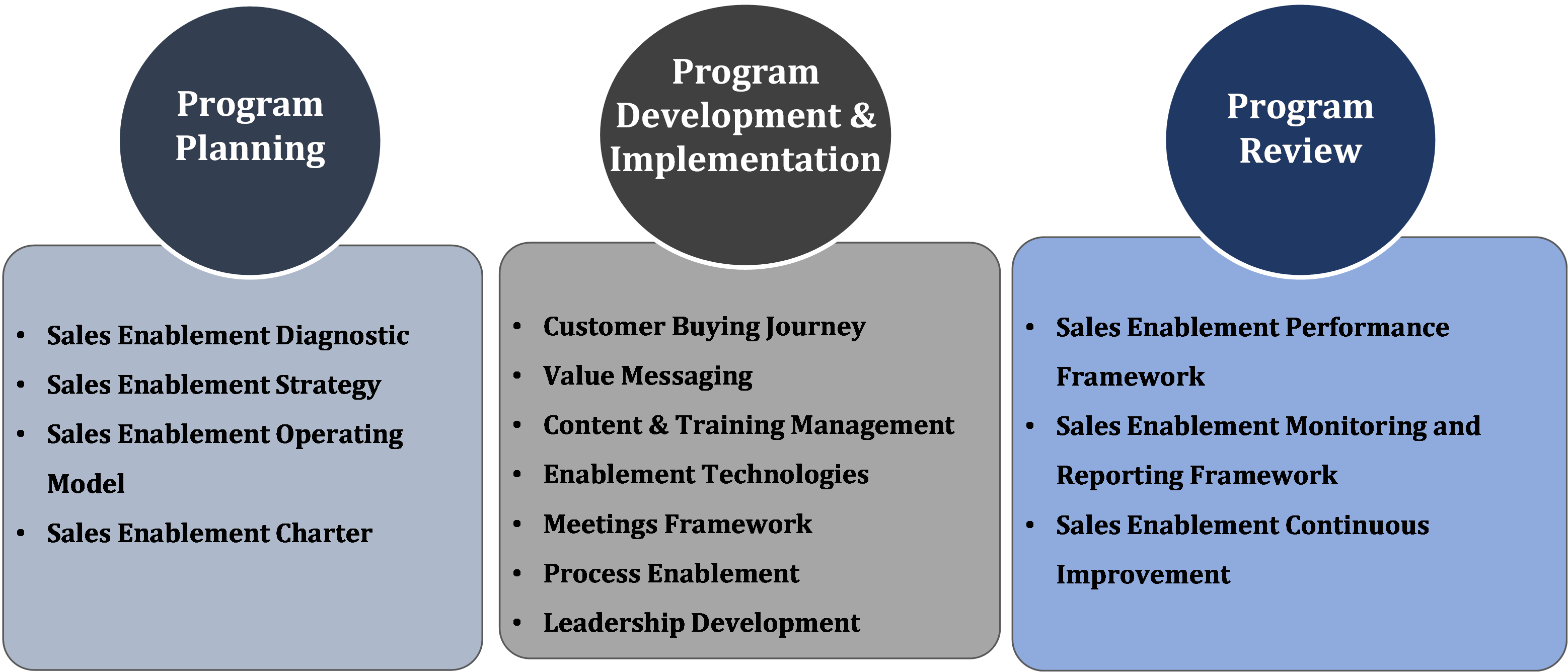
The methodology used in delivering the Sales Enablement program consists of a number of leading approaches and techniques to ensure each element of the program delivers on each objective. At its core, the methodology is a collaborative and co-creative where we derive synergy from your strong understanding of your business and our strong understanding of leading enablement practices.
The methodology across each phase is detailed below:
Program Planning
This is the phase where we are building an understanding of your current state through the Enablement Diagnostic Scorecard and then defining a future state through the Sales Enablement Strategy, Operating Model and Charter.

These are the deliverables coming out of this phase and the specific approach adopted for each of these deliverables is outlined below.
This program planning phase commences with a diagnostic review of your current sales and sales enablement function the popular SWOT Analysis model. This provides a simple, yet powerful way to effectively assess the current state and identify opportunities for enhancement.
The diagnostic review will cover these key Diagnostic Dimensions: organization structure, workforce numbers, % of sales group meeting/exceeding quota, team culture & dynamics, time to top productivity for new hires, feedback on content and training services, sales pipeline metrics 3Vs – Volume, Value and Velocity We will work together to assess the Sales Group along these dimensions and generate a Enablement Diagnostic Scorecard which highlights your organizations current standing along these dimensions in comparison to industry and or desired standards and rated on a 3-point Likert Scale – Below Standards, Meets Standards, Exceeds Standards.
Using this scorecard ratings, we will work with you to prioritize these dimensions. The prioritization will inform the key elements and themes that will be incorporated into the development of the Sales Enablement Strategy. This scorecard also becomes the basis for evaluating the impact of this program as we progress through the modules.
The Sales Enablement Strategy will be built through a facilitated workshop designed to engender collaboration and co-creation. The co-creation will be based on the synergy between your strong understanding of your business and our strong understanding of leading enablement practices. This will ensure we are building a Sales Enablement Strategy for now and the future.
The approach for developing the Sales Enablement Operating Model with you will be an iterative consulting approach. This means we will provide with pre-populated templates and tools which we will then work with you to update and refine, through a few iterations. This way, we ensure the model aligns with your current and future needs. The Enablement Model is the interpreter of the Enablement Strategy. It helps interpret the model from a seemingly esoteric, idealistic state to tangible practical terms that provide the basis for developing the Sales Enablement Charter.
The Sales Enablement Charter will be built through a facilitated workshop designed to engender collaboration and co-creation. The co-creation will be based on the synergy between your strong understanding of your business and our strong understanding of the ideal sequencing of enablement functions. This will help ensure we are developing a charter that is built-for-purpose to support your sales objectives and plans.
We will work with you to develop the Sales Enablement Charter consisting of these 4 main sections- Posture, Purpose, Priorities and Progress (4P)s.

Program Development & Implementation
With the program planning concluded we will be combining the program development and implementation phases to ensure a more agile, iterative approach to implementing the Sales Enablement Program within your organization.
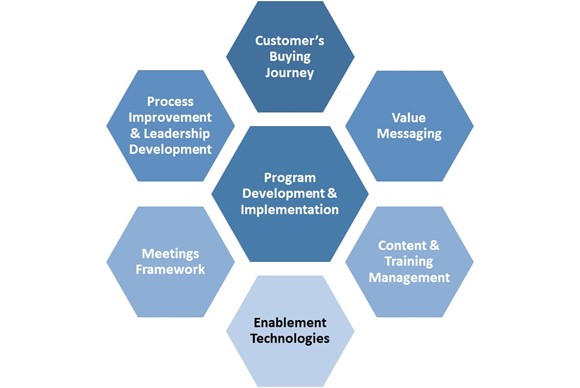
The specific deliverables from this phase are Customer’s Buying Journey, Value Messaging, Content Management, Training Management, Enablement Technologies, Meetings Framework, Process Improvement and Leadership Development.
The methodology we will adopt in developing the Customer’s Buying Journey will be a facilitated workshop designed to engender collaboration and co-creation. The co-creation will be based on the synergy between your strong understanding of your customers and our strong understanding of the key pillars required in developing a fit-for-purpose customer journey.
The value in co-creating the customer journey is that begins to engender and reinforce a customer-centric approach to enablement activities. This is intentional as it shifts the focus of enablement from activity based to impact/outcome based, ensuring that everything the enablement function does is aimed at helping the Sales Group advance the customer along their buying journey. Once completed, the Customers’ Buying Journey output document will be rolled out across your Sales Group to reinforce the customer-centric mindset.
The approach we will adopt for developing Value Messaging is a classic consulting approach, using our 4C Framework – Clarity, Consistency, Coverage & Customer Impact. The 4C Framework will be used to review existing enablement activities and assets to assess how well the value messages have been infused into these enablement activities and assets. The outcome will be some findings which will inform the recommendations to help ensure the value messages are more infused into all sales enablement activities. The final step involves developing and implementing a tactical plan to infuse these refreshed value messages into all enablement activities and assets going forward.
For Content Management and Training Management, we will build on the findings from the ‘Enablement Diagnostic Scorecard’ – especially the findings that relate to feedback on your current content services and training services, respective. The approach we will adopt to respond to these potential issues from the findings is the Shewhart Cycle or PDCA approach. The PDCA (Plan-Do-Check-Act) Cycle is an iterative design and management method used for the control and continual improvement of processes and products, in this case content. In Plan, we will develop a v 1.0 of the plan to address those issues. ‘Do’ involves implementing the tactics in the plan so we can begin to test and get feedback. ‘Check’ requires evaluating to be sure the outcome of the tactics match our original objectives and ‘Act’ refers to adjusting the plan so we can improve during the next iteration.
The approach Enablement Technologies starts with a completeness check of your technology tool stack. We will work with you to gain an understanding of your current technology tools and benchmark that against our Enablement Technology Assessor. This completeness check will highlight any system, functional, non-functional and integration gaps. The analysis will be done along 3 main dimensions – Sales Enablement Content Management System, Learning Management System and Coaching Tool. Through the analysis we will also identify what changes need to be made to bring your technology stack up to the required level. These changes will then be consolidated into a plan with owners, timelines, and success criteria to drive the implementation.
When designing the Meetings Framework, we will adopt the guiding principles of the 5 O’s for effective meetings – Objective, Order, Overview, Outcome, Ownership. The framework will ensure the Objective of the meeting is clear, which then informs the Order the meeting will follow. Each meeting should start with an Overview of the objective and order. And as items are discussed, the Outcome for each item is clear and clear Ownership of the tasks so the full value of the meeting is realized.
The approach for the Process Enablement consists of 3 main steps – Definition, Documentation and Enablement. In definition, we identify and describe the key business processes and then proceed to document them in simple to understand, refer and update formats and then finally set up enablement initiatives so existing and new team members fully follow the sales enablement business processes.
When working on the Leadership Development, we will adopt the 3C Leadership Framework for effectively developing the sales leadership team so they are better equipped to drive sales enablement initiatives across the team. The 3C Leadership Framework consists of Competence -what the leader is able to do; Character – who the leader is as a person; and Connection – who the leader knows and how knows the leader. These will help identify the current leadership capacity and opportunities for growth which then inform the leadership development initiatives that are rolled out.

Program Review
This is the phase where we continue to ensure review and improvement of your sales enablement function. The specific deliverables from this phase are Sales Enablement Performance Framework, Sales Enablement Monitoring & Reporting Framework and Sales Enablement Continuous Improvement.
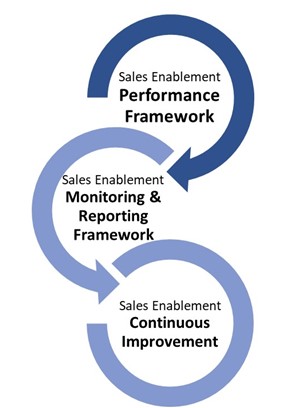
The Sales Enablement Performance Framework refers to the approach for defining the success criteria and metrics for the Sales Enablement function. The approach adopted in developing this is a collaborative review of leading practices to identify what is most relevant for your organization’s maturity level and strategic goals. Ultimately the Sales Enablement Framework should be able to demonstrate how the activities of the Sales Enablement function is directly impacting the topline along our 5 V Framework – Value, Volume, Velocity, Variety and Vitality of deals.
the Sales Enablement Monitoring and Reporting Framework refers to setting up a system for monitoring and reporting the activities of the Sales Enablement Function against the success criteria and metrics defined in the Performance Framework. This Reporting Framework helps to validate and communicate the value the sales enablement function is adding to the achievement of sales targets and objectives.
Overall, a philosophy of Continuous Improvement will be imbibed into the program so the outcome of the monitoring and reporting inform the Sales Enablement Strategy and the other deliverables in the Program Planning Phase so that your sales enablement function continues to grow and evolve, year on year.
Industries
This service is primarily available to the following industry sectors:

Consultancy (Management Consultancy)
History
The specific start of Consulting as an industry has not been broadly agreed across. Some would say, consulting has always existed, especially if one were to trace advisors to decision-makers back to the Antiquity. In such situations, Marco Polo, Colbert, and Hamilton are, in a way, the first consultants. However, most will agree that modern Consulting originated in Europe at the end of the 19th Century during the second industrial revolution.
Management consulting grew in this century as businesses began to expand and needed more guidance on how to manage their resources. Early management consultants were often former executives or leaders in their respective industries, who provided advice and direction to businesses on how to organize their operations.
In the early 20th century, consulting firms such as Arthur D. Little and McKinsey & Company began to emerge, and the profession soon became a major economic force in the business world.
As the 20th century progressed, management consulting evolved to become an integral part of corporate strategy. Consulting firms increasingly focused on helping businesses design and implement plans to improve efficiency, reduce costs, and increase profits.
Current Position
In the 21st century, many consulting firms have diversified their services and now offer a wide range of expertise, from technology to operations to marketing. Management consulting is now an essential part of the modern business landscape, with firms offering strategic advice and guidance on how to maximize organizational performance.
Management consulting is a thriving industry today. Companies of all sizes are increasingly turning to professional management consultants to help them address challenges and solve problems. Management consulting services are in demand across a range of industries, from finance to manufacturing to healthcare to technology. Consulting firms offer strategic advice, operational support, and implementation services to help their clients achieve their goals. Consulting firms often specialize in certain areas, such as technology, finance, operations, or marketing. Consulting fees are based on the scope of the project and the value the consulting firm provides to its clients. As technology advances, management consultants are now increasingly offering digital services, such as data analytics and artificial intelligence. This is helping to drive growth and innovation in the industry.
According to a report by Research and Markets, the global management consulting market was valued at $237.17 billion in 2019.
There are a few challenges facing the consultancy industry today. One is Changing Client Needs: Clients are continually changing their needs and demands as technology advances and global markets evolve. Management consultants must stay up to date on the latest trends to ensure they can provide the best solutions to their clients. Another challenge is Advancing Technology: Technology is rapidly changing the way management consultants work. This means consultants must stay abreast of the latest software, tools, and systems to stay competitive.
Players in the management consultancy industry also need to Adjust to a Global Economy. With the increasing globalization of markets, management consultants must be able to work with clients in different countries and cultures. This requires an understanding of different business practices and customs. This global economy becomes even more challenging with Increasing Competition and Growing Regulatory Environment. The more competitive landscape means consultants must differentiate themselves from their competitors by providing unique and valuable solutions. While the more complex regulatory requirements, means management consultants must stay up to date on the latest regulations and be able to understand their implications for their clients.
Future Outlook
The future of management consulting looks bright as new technologies continue to open up new opportunities for consultants to provide value to their clients. Companies will increasingly need professional advice to address their challenges and capitalize on new opportunities. Management consulting firms will need to continue to innovate and adopt new technologies to stay ahead of their competition. This may include leveraging Artificial Intelligence (AI), machine learning, predictive analytics, and the Internet of Things (IoT). Additionally, firms will need to focus on developing specialized knowledge and expertise to target specific industries and problems. As the consulting landscape becomes ever more competitive, firms must be able to provide cost-effective solutions to help their clients succeed. In the future, successful firms must be agile and adaptive, leveraging the latest technologies to provide innovative solutions and insights.
The global management consulting market is expected to reach a value of USD 477.3 billion by the end of 2033, registering a CAGR of 4.8% during the forecast period (2023-2033). The growth of the market is attributed to an increasing demand for cost-efficient and innovative solutions, coupled with the growing demand for consulting services among small and medium-sized enterprises. Furthermore, the increasing focus of organizations on cost reduction and operational efficiency is also driving the growth of the market. Additionally, the rising demand for data-driven insights and analytics solutions among businesses is further complementing the growth of the market.
However, with the challenges of today, the consulting firms that will take advantage of this future potential will need to be good at both innovation and selling those innovative solutions – this is the case for Sales Enablement for players in the consultancy industry.
Healthcare (Life Sciences)
History
Articulating the specific start of healthcare as an industry is not as straightforward. This is because many would argue that healthcare started about the same time that human civilization started. The home started as the upholder of healthcare where care was provided on everything from birth to illness and eventually death. Within the home ‘experts’ prepared home remedies made up of certain spices, herbs, plant parts etc. which were used to cure a disease or ailment. While the medicinal properties of the ingredients in the remedies could not be validated, they were mostly discovered through trial and error, and then the knowledge was passed down from one generation to another.
The knowledge base continued to grow, and it passed through the generations. Many started recording their recipes for curing sickness, although the sickness itself was not yet well understood. Much of the medical knowledge in the ancient world was as a result of trial, error and success. Later on, it became a subject of purposeful study among the Persian, Egyptian, Greco-Roman, Chinese, Indian cultures, among others. These ancient healthcare providers gained extensive knowledge of local flora and devised the principles and practice of ancient pharmacology. One of the oldest and most extensive examples comes from Mesopotamia known as “Treatise of Medical Diagnosis and Prognoses,” where some forty tablets were comprised of prescriptions and treatises that outlined treatments based on rational observations of the body.
In the 19th century, there were numerous technological, chemical, and biological advances that gave physicians the means to better understand, diagnose, and treat ailments. The discoveries included anesthetics, syringes, antiseptics, x-rays, and penicillin. Around the beginning of the 20th century, modern healthcare began to evolve. Doctors started to initiate prepaid arrangements for their services, foreshadowing the medical insurance and administration field that is in place today.
Current Position
Today, the healthcare industry is rapidly evolving due to advances in technology and research, as well as increased demand for healthcare services as the population continues to grow. Healthcare organizations are facing a range of new challenges, including rising costs, increasing complexity of care delivery, and the need to provide quality care in a timely manner.
At the same time, healthcare organizations are embracing new opportunities to improve the quality and cost-effectiveness of care. This is resulting in the development of innovative models of care delivery, the integration of health information technology, and the increasing use of data analytics to improve patient outcomes.
Healthcare has become increasingly sophisticated and specialized, with advances in medical technology, new medications and treatments, and a greater emphasis on preventive care. In the past few decades, the industry has shifted toward a focus on patient-centered care, and the development of healthcare organizations and networks that coordinate care for individuals and communities.
The cost of healthcare varies greatly depending on the type of services being provided and the location. According to the Kaiser Family Foundation, the national average cost of healthcare in the United States was $10,744 per person in 2019.
Life sciences has evolved into a field that encompasses the study of living organisms and their interactions with each other and the environment. It includes various disciplines such as biology, biochemistry, genetics, ecology, and biotechnology.
Today, life sciences research is advancing rapidly with the help of new technologies such as gene editing, CRISPR, and advanced imaging techniques. Scientists are exploring new frontiers in areas such as synthetic biology, personalized medicine, and regenerative medicine.
In recent years, there has been a growing focus on using life sciences to address some of the world’s most pressing challenges, such as climate change, food security, and disease eradication. The COVID-19 pandemic has highlighted the critical role that life sciences play in understanding and combating infectious diseases.
Future Outlook
The future of healthcare industry is bright, with technology and innovation playing a major role in reshaping the industry. AI and machine learning are being used to improve patient care, reduce costs, and improve the accuracy of diagnoses. Digital health records are helping to improve patient data storage and access. Robotics and automation are being used to streamline processes, improve safety and reduce costs. Telemedicine is becoming increasingly popular, allowing patients to receive care remotely. Wearable health technology is being used to monitor and analyze patient data. Finally, personalized medicine is being used to create treatments tailored to the individual.
According to the Regional Research Reports, the global healthcare service market size is projected to be USD 7.93 billion in 2022 to USD 16.87 billion in 2033, exhibiting a CAGR of 8.4% from 2023 to 2033. While the global smart life sciences manufacturing market size to record a CAGR of 14.4% during 2023–2033, it is projected to reach USD 78.97 billion by 2033 from USD 18.64 billion in 2022.
One of the most exciting areas is the development of personalized medicine, which involves tailoring medical treatments to an individual’s unique genetic makeup. Advances in genomics, data analytics, and machine learning are making this approach increasingly feasible and effective.
Another area of growth is regenerative medicine, which aims to restore or replace damaged tissues and organs using stem cells or other techniques. This field has the potential to revolutionize healthcare by providing new treatments for a range of diseases and injuries.
The use of biotechnology in agriculture is also expected to grow, as scientists work to develop crops that are more resistant to pests and disease, require less water and fertilizer, and have higher yields.
Finally, there is increasing interest in using synthetic biology to create entirely new organisms and biological systems. This has the potential to lead to new breakthroughs in fields such as energy production, environmental remediation, and drug discovery.
Overall, the future outlook for life sciences is bright, with many exciting opportunities for research, innovation, and discovery.
Biotechnology
History
The history of biotechnology can be traced back to ancient times when humans first discovered the process of fermentation. Some initial concepts of biotechnology started in the 19th century however, the modern era of biotechnology began in the 20th century with the discovery of DNA and the development of genetic engineering techniques.
A timeline of some significant milestones in the history of biotechnology started in 1859 when Charles Darwin published his theory of evolution, which laid the foundation for the study of genetics and heredity. In 1865,Gregor Mendel published his work on the laws of inheritance, which laid the foundation for modern genetics.
The 20th century is notable when in 1928 Alexander Fleming discovered penicillin, the first antibiotic. Then in 1944 Oswald Avery, Colin MacLeod, and Maclyn McCarty demonstrated that DNA is the carrier of genetic information. 1953 was when James Watson and Francis Crick discovered the structure of DNA. In 1973, Herbert Boyer and Stanley Cohen developed the first successful recombinant DNA technology.
1975 could be said to be the year when biotechnology was identified as a viable industry as this was when the first biotech company, Genentech, was founded. In 1980, The U.S. Supreme Court ruled in Diamond v. Chakrabarty that genetically modified organisms (GMOs) could be patented – a landmark regulatory change in the industry. 1982 was the year the first genetically engineered human insulin was approved for use. Probably the last notable milestone of the 20th century was in 1990when the Human Genome Project was launched, aiming to sequence the entire human genome. It was in 2003 that the Human Genome Project was completed, providing a complete map of the human genome.
Current Situation
Today, biotechnology is used in a wide range of applications, including agriculture, medicine, environmental science, and industrial processes. These wide range of uses have largely contributed to the growth in size of the industry. The global biotechnology market was estimated at USD 859.94 billion in 2022. North America accounting for about 37.76% of this market.
Biotechnology has continued to advance rapidly in recent years and has become an increasingly important field in a variety of industries. Here are some examples of biotechnology today:
For example, genetic engineering techniques such as CRISPR-Cas9 have revolutionized the ability to modify DNA and create genetically modified organisms (GMOs). These techniques are being used to develop new crops with improved yields and resistance to pests and disease, as well as to create new medical treatments.
Also with respect to drug development, biotechnology is being used to develop new drugs and treatments for a wide range of diseases, including cancer, diabetes, and rare genetic disorders. These treatments include gene therapies, monoclonal antibodies, and vaccines.
In the area of diagnostics, biotechnology is also being used to develop new diagnostic tests for diseases. For example, PCR (polymerase chain reaction) is a technique that can amplify DNA samples and is widely used in medical diagnostics.
Agricultural biotechnology is being used to improve crop yields, develop new plant varieties, and create more sustainable agriculture practices. For example, genetic engineering has been used to create crops that are resistant to pests and diseases, reducing the need for harmful pesticides.
While industrial biotechnology is being used in industrial processes to create new products and materials. For example, bioplastics can be made from renewable resources and are biodegradable, reducing the environmental impact of plastic waste.
Biotechnology is also being used to develop personalized medical treatments, tailored to an individual’s genetic makeup. This includes gene therapies and personalized cancer treatments.
Overall, biotechnology is a rapidly advancing field with many potential applications and benefits for society. As technology continues to advance, it is likely that biotechnology will continue to play an increasingly important role in a wide range of industries.
Future Outlook
The future outlook for biotechnology is very promising, with the potential to transform many industries and have a significant impact on society. This is further highlighted by the projected growth of the industry. The biotechnology industry is expected to be conservatively worth around USD 1.7 trillion by 2030 and poised to grow at a noteworthy CAGR of 8.7% from 2023 to 2030.
There are some key trends and developments that are likely to shape the future of biotechnology over time. Advancements in gene editing technologies such as CRISPR-Cas9 is expected to revolutionize the field of biotechnology by allowing for precise genetic modifications. This has the potential to transform medicine, agriculture, and many other industries. The ability to sequence an individual’s genome and create personalized medical treatments is a rapidly growing area of biotechnology. This could lead to more effective treatments for a wide range of diseases.
Synthetic biology involves engineering cells and organisms to perform specific functions, such as producing a particular chemical or drug. This has the potential to create new materials and products with a wide range of applications.
Bioprocessing involves using biological systems to manufacture products such as chemicals, drugs, and food. This has the potential to be more sustainable and environmentally friendly than traditional manufacturing methods. The use of artificial intelligence, machine learning, and big data in biotechnology is expected to increase in the coming years. This could lead to new insights and discoveries in fields such as drug development and personalized medicine.
Overall, the future of biotechnology is likely to be characterized by rapid advancements in technology and increased collaboration between different.
Financial Services
History
The history of financial services can be traced back to ancient civilizations where people used barter trade for goods and services. However, as societies evolved, the need for more sophisticated financial services arose.
In ancient civilizations, people used to trade goods and services through the barter system, where goods were exchanged for other goods. As societies grew larger, people started using coins made of precious metals as a medium of exchange. During the Middle Ages, the first banking institutions emerged in Italy. The Knights Templar, a religious order, started providing financial services, such as loans and money transfers, to people traveling to the Holy Land.
The Renaissance period saw the growth of banks in Europe. The Medici family, one of the most prominent banking families, established the first bank in Florence, Italy. They also introduced double-entry bookkeeping, which revolutionized accounting practices. During the Industrial Revolution brought about significant changes in the financial sector. The growth of industry led to the need for capital, and banks started providing loans to businesses. The first joint-stock companies were also formed during this time, providing investors with a way to invest in businesses.
The 20th century saw significant developments in the financial services sector. The establishment of central banks, the creation of credit cards, and the growth of electronic payments were some of the most significant developments during this time. The financial services industry also became more globalized, with the establishment of international banks and financial institutions.
Overall, the history of financial services is marked by constant innovation and evolution, driven by the needs of individuals, businesses, and societies. Today, financial services have become an essential part of our daily lives, providing a wide range of services, including banking, insurance, investments and others.
Current Situation
Financial services today encompass a broad range of services that help individuals, businesses, and governments manage their financial resources. This highlights the significant growth the industry has experienced in recent times. The financial services market reached a value of nearly $23.3 trillion in 2021, having grown at a compound annual growth rate (CAGR) of 3.5% since 2016.
There are a few more common types of financial services available today. For example, Banking Services which includes traditional banking services like checking and savings accounts, loans, and mortgages, as well as newer services like online and mobile banking, bill payment, and debit and credit cards. There are also Investment Services which include brokerage services, investment advice, and portfolio management. These services help individuals and institutions make investment decisions and manage their portfolios to achieve financial goals.
Another very common type are Insurance Services which include life insurance, health insurance, and property and casualty insurance. Insurance helps individuals and businesses protect themselves against financial losses due to unexpected events like accidents, illness, or damage to property. Wealth Management Services are provided by financial advisors and financial planners who help high-net-worth individuals manage their investments, plan for retirement, and optimize their tax strategies.
Another rapidly growing type of financial service is Payment Services, which include credit card processing, payment gateways, and digital payment services like PayPal and Venmo. These services facilitate the exchange of money between individuals, businesses, and governments. More recently Fintech (financial technology), has emerged as a major force in the financial services industry. Fintech companies use technology to provide innovative financial services like digital banking, robo-advisory, and peer-to-peer lending.
Overall, financial services today are more diverse and accessible than ever before, thanks to advancements in technology and the globalization of financial markets. These services play a vital role in the economy, helping individuals and businesses manage their financial resources and achieve their financial goals.
Future Outlook
The future of financial services has been growing in the past years and it is expected to continue to grow for years to come. The market is expected to grow to $33.3 trillion by 2026 at a CAGR of 7.4% (for a period of 2021 to 2026). The industry will continue to be shaped by rapid advancements in technology, changing customer needs and expectations, and increasing regulatory pressures.
The likely trends to shape the future of financial services have technology, consumer/regulatory expectations as major drivers. Digital Transformation, a growing trend, financial institutions are investing heavily in digital transformation to improve customer experience, increase efficiency, and reduce costs. This includes the use of artificial intelligence, big data analytics, and blockchain technology to offer personalized services and streamline operations. The Fintech Disruption will continue as companies continue to disrupt traditional financial services by providing innovative solutions that are faster, cheaper, and more convenient. This trend is expected to continue, with the growth of fintech ecosystems and partnerships between fintech and traditional financial institutions.
A regulatory driven trend is Open Banking, which is a regulatory initiative that allows customers to share their financial data with third-party providers, enabling the creation of new financial products and services. This trend is expected to increase competition and lead to the development of more innovative solutions for customers. Another one is Sustainability. Environmental, Social, and Governance (ESG) factors are increasingly important for investors and customers, and financial institutions are responding by offering sustainable investment products and incorporating ESG considerations into their decision-making processes.
There are also Regulatory Challenges as financial institutions are facing increasing regulatory pressures, including data privacy regulations, anti-money laundering laws, and cybersecurity requirements. This trend is expected to continue, leading to increased compliance costs and potential fines for non-compliance.
Overall, the future of financial services is likely to be shaped by a combination of technological innovation, changing customer needs, and evolving regulatory requirements. Financial institutions that are able to adapt to these changes are likely to thrive, while those that fail to keep up may struggle to remain relevant in a rapidly evolving industry.
Technology
History
The history of technology can be traced back to the prehistoric times when humans began to create simple tools to assist them in their daily lives. Over time, technological advancements have had a significant impact on the way we live, work, and communicate with each other.
Some key milestones in the history of technology highlight how ancient, yet fast paced the technology evolution has been. The Invention of the Wheel in 3500 BC is widely regarded as one of the most important inventions in human history, and its development allowed for the creation of more advanced tools and transportation methods.
However, in more recent times, the invention of the Printing Press in 1440 by Johannes Gutenberg revolutionized the way information was disseminated and made books and other printed materials more widely available. The period of 1760 – 1840, referred to as the Industrial Revolution brought about a significant shift in the way goods were produced, with the introduction of machines that could perform tasks faster and more efficiently than human labor.
The Telegraph invented in 1837 revolutionized long-distance communication, allowing messages to be sent quickly over long distances. Still along the lines of communication the Telephone was invented in 1876 by Alexander Graham Bell. This changed the way we communicate, making it possible to talk to someone who was not physically present. The invention of the Automobile in 1885, revolutionized transportation, making it possible to travel faster and farther than ever before.
Perhaps the most significant advancement in more recent times was the development of the Internet in 1969: This transformed the way we access information and communicate with each other, enabling instant communication and the sharing of information on a global scale and at unprecedented speed.
The adoption of internet soared in 2007 with the introduction of the Smartphone brought together the functions of a telephone, computer, camera, and other devices into a single, portable device that has become an essential part of modern life.
As technology continues to evolve, it will undoubtedly have a profound impact on the way we live, work, and how we do everything else in the future.
Current Situation
Technology today continues to rapidly advance and impact our daily lives in many ways. As of 2021, the global tech industry is worth roughly $5.2 trillion. Most of this money is divided up between North America (35%), Asia (32%), and Europe (22%). This is due mainly to some notable technological advancements in recent years. For example, Artificial Intelligence (AI) is becoming increasingly prevalent in our daily lives, with applications in areas such as virtual assistants, self-driving cars, and medical diagnosis.
The Internet of Things (IoT) refers to the network of physical devices, vehicles, home appliances, and other items embedded with sensors, software, and connectivity, which enables them to connect and exchange data. This is a major build on the capability of internet, and it will continue to drive a level of interconnectivity across many platforms and aspects of human life. Another major build on the internet capability is Cloud Computing. Cloud computing allows users to access and store data and software over the internet rather than on local computers or servers.
Virtual and Augmented Reality (VR and AR) technologies are becoming more widespread, with applications in areas such as gaming, education, healthcare and other areas that rely heavily on simulation learning/practice. Blockchain Technology is providing a democratized platform for securely doing transactions – almost removing the need for a regulating body. Its use will continue to grow in applications, such as cryptocurrency, supply chain management, healthcare, contracting to create secure and transparent transactions.
5G technology is the latest generation of cellular networks, which offers faster internet speeds and improved connectivity for devices. This will be a major driver to further increase the adoption of the latest and greatest technology products across all aspects of life. Advances in biotechnology have led to the development of new treatments for diseases, such as gene therapies and personalized medicine. There are bigger potentials of further personalizing the composition, delivery and dosage of medicine based on the patient’s genetics.
The rapid development of technology in recent years is only a strong indicator of the greater and faster advancements in the future.
Future Outlook
The future outlook for technology is exciting and filled with endless possibilities. With technology now more interwoven with many other industries such as healthcare, financial services and retail, it is very challenging to quantify the potential future market size. However, By 2033, the Global Tech Support Services market is projected to reach a market size of US$ 111 Bn. While this is just for the Global Tech Support Services Market, it is a pointer to how the entire technology market is trending to grow in the coming years.
There are some potential developments and advancements that could further shape the future of technology. Artificial Intelligence (AI) will become even more advanced and integrated into our daily lives, with applications in areas such as healthcare, finance, and transportation. The Internet of Things (IoT) will continue to grow, leading to more interconnected devices and smart homes, cities, and transportation systems.
With the continued development of supercomputers, Quantum Computing will revolutionize computing power and enable us to solve problems that are currently impossible with classical computers. While Robotics and Automation will continue to develop and disrupt traditional industries, creating new jobs and opportunities. Biotechnology will lead to new treatments and cures for diseases, including gene editing and personalized medicine.
As the ambitions of global tech leaders grow, Space Exploration and Colonization will continue to advance, with more ambitious projects and technologies being developed to explore and settle other planets. While the exploration of space continues, the preservation of earth will also be a priority as Renewable Energy will become more accessible and affordable, leading to a shift away from fossil fuels. Virtual and Augmented Reality will become even more immersive, leading to new forms of entertainment and communication, while their application will spread to other industries.
As technology continues to evolve and advance, it will undoubtedly have a profound impact on the way we live, work, and interact with each other, further impacting every single aspect of our lives.
Locations
This service is primarily available within the following locations:

Toronto, Canada
History
Toronto is the capital city of the province of Ontario, Canada, and is one of the most populous cities in the country. The region that is now Toronto has been inhabited for thousands of years by various Indigenous peoples, including the Huron-Wendat, the Seneca, and the Mississaugas of the Credit First Nation.
In 1834, York was renamed Toronto, which is derived from the Mohawk word “tkaronto,” meaning “where there are trees standing in the water.” The city continued to grow and became an important industrial and commercial center in the late 19th and early 20th centuries.
In the mid-20th century, Toronto experienced a wave of immigration, which led to significant cultural and demographic changes. The city also underwent significant urban renewal projects in the 1960s and 1970s, which transformed many of its neighborhoods.
The history of technology in Toronto dates back to the mid-19th century, when the city’s first telegraph line was installed in 1846, connecting Toronto to Hamilton and other nearby cities. This paved the way for further technological developments, and Toronto soon became a hub of innovation and industry.
In the 1960s and 1970s, the Ontario government introduced a number of major reforms to the healthcare system, including the establishment of a publicly funded healthcare system known as OHIP (Ontario Health Insurance Plan). This system provided universal coverage for medically necessary services and has since become a cornerstone of healthcare in Toronto and throughout Ontario.
Toronto became a major financial, administration, real estate, insurance, educational, wholesaling, retailing, and tourist destination centre. The city gained national financial supremacy housing five of the six national banks. The Toronto Stock Exchange (TSE) became part of a publicly traded company, the Toronto-based TSX Group, Inc., in 2002. The exchange adopted TSX as its abbreviation in 2004.
Current Position
Today, Toronto is a vibrant and diverse city that is home to over 7 million people, making it the largest city in Canada and one of the most populous in North America. It is a hub of commerce, culture, and innovation, with a thriving arts and culture scene, a bustling financial district, and a growing technology sector. Toronto is known for its diverse and multicultural population, with over 50% of its residents born outside of Canada.
Toronto annually generates a GDP of about CAD 440bn which represents about 20% of Canada’s GDP. It is home to 38% of Canada’s business headquarters. Fifteen free trade agreements provide access to nearly 1.5 billion consumers with a combined GDP of more than US$59 trillion or more than one-half of the world’s output of goods and services. Toronto’s GDP has grown by an average of 2.4 percent annually since 2009 compared to a national rate of 1.8 percent.
Toronto is already a major center of healthcare, with a number of world-renowned hospitals and research centers, including the University Health Network, the Hospital for Sick Children, the Princess Margaret Cancer Centre and the Centre for Addiction and Mental Health. These institutions are at the forefront of research and innovation in areas such as cancer treatment, genomics, and regenerative medicine.
In more recent years, Toronto has emerged as 3rd largest tech sector in North America, thus functioning as a leading center of innovation and entrepreneurship in the technology sector, with companies such as Shopify, Wattpad, and Wealthsimple making significant contributions to the city’s economy and reputation as a technology hub, while making an impact on a global scale. The city is also home to a number of leading research institutions, including the Vector Institute for Artificial Intelligence and the MaRS Discovery District, which support research and development in areas such as machine learning, biotechnology, and robotics.
Future Outlook
Toronto is expected to continue to experience growth and development, as the city is projected to see significant population growth in the coming years. According to some estimates, the city’s population could reach 10 million by 2051.
This growth is expected to be driven in part by immigration, with Toronto continuing to attract people from around the world who are seeking a high quality of life and economic opportunities. This will further contribute to the city’s diversity and multiculturalism.
In terms of the economy, Toronto is expected to remain a major center of business and innovation, with a growing technology sector and a strong presence in industries such as finance, healthcare, and advanced manufacturing. This is expected to contribute to job growth and economic prosperity. The city of Toronto has set an ambitious goal of attracting $100 billion in new private investment by 2030 through the Invest Toronto initiative.
In the coming years, the healthcare sector in Toronto is expected to continue to grow and evolve, with a focus on improving patient outcomes and increasing efficiency. This will be driven by advances in technology, such as electronic health records and telemedicine, as well as an increased emphasis on personalized medicine and preventive care.
One of the key challenges facing healthcare in Toronto is the need to address issues related to access and equity. This includes ensuring that all residents, regardless of income or background, have access to high-quality healthcare services. To address these challenges, there will be a continued focus on community-based healthcare, as well as programs to address social determinants of health, such as poverty and housing insecurity.
In the coming years, the technology sector in Toronto is expected to continue to grow, driven in part by advances in areas such as artificial intelligence, blockchain, and quantum computing. This growth is likely to be supported by an increasing number of partnerships between tech companies, academic institutions, and government agencies.
One of the key challenges facing the technology sector in Toronto is the need to address issues related to diversity and inclusion. This includes ensuring that all residents, regardless of their background or identity, have access to opportunities in the tech industry. To address these challenges, there will be a continued focus on initiatives aimed at promoting diversity, such as mentorship programs, training and education initiatives, and community outreach efforts.

London, UK
History
London has been a major centre of commerce since Roman times and has been a hub of global trade and finance since the Middle Ages. During the Industrial Revolution, London was at its most prosperous and became the world’s largest city by population in the early 19th century. In the 19th century, it was the financial centre of the world and the world’s largest port. The city was also a major centre of the slave trade. In the late 20th century, London was home to the world’s largest stock exchange and a hub for world finance and banking. London is currently one of the world’s leading financial centres and is home to many international banks, financial institutions and multinational corporations. It is also a major centre for culture, media, art, fashion, entertainment and research.
London has had a major role in the history of global finance. It has been a major trading center since the 16th century and has been a leader in the development of financial services since the Industrial Revolution. London is home to the first modern stock exchange and the world’s largest foreign exchange market. London is also a major global center for banking, insurance, investment banking, and private equity. The City of London is also home to the Bank of England, the oldest central bank in the world. London is a major center for global capital markets and is home to some of the world’s largest financial institutions. Additionally, London is the birthplace of modern insurance and is the leading center for reinsurance. London has a long and distinguished history in the global financial services sector and continues to be a major financial center today.
Current Position
London is one of the world’s leading economic centres, and the economy of Greater London is one of the largest in the world. It is a major global financial centre, home to a variety of financial services companies, including four of the world’s five largest banks, making it the world’s largest banking sector. The economy of London is highly diversified, with industries including finance, banking, insurance, retail, professional services, IT, and media. London is also one of the world’s leading centres for innovation and entrepreneurship, with a large number of start-ups and tech companies located in the city. Additionally, London is a major global centre for tourism, with millions of visitors each year.
London is one of the world’s leading cities for management consulting, with a wide and varied range of opportunities for business and professional development. In 2019, the consultancy market in London was worth £5.5 billion and is expected to continue to grow rapidly. Management consulting firms have been particularly active in the city, with many international firms setting up offices in London, as well as a growing number of domestic firms. This has been driven by the need for specialist knowledge, as well as the ability to access a wider range of services to support the business needs of clients.
Future Outlook
London is also a global hub for innovation, with many of the world’s leading technology companies and start-ups based in the city. This has led to an increase in demand for technology-related management consulting services and has created a range of new opportunities for consulting firms to explore.
The outlook for management consulting in London is positive, with the city’s strong economy, increasing demand for consultancy services and the presence of leading international firms all contributing to the continued growth of the sector.
London is a leading global financial centre and is home to a large and diverse range of financial services companies. It is the major hub for banking, insurance, and asset management in Europe, and it is home to some of the world’s largest financial services firms. London is also a major centre for trading in derivatives, foreign exchange, and other financial products. The financial services sector in London has experienced significant growth in recent years, and the outlook for this sector is positive. London is expected to continue to be a major hub for finance.
With all this, it is clear that London will continue to power the UK economy out of recession and is poised to be the fastest growing area in the country over the coming years. The capital’s economy is on track to expand 2.6 per cent each year between 2024 and 2026, pushing it to the top of the countrywide growth table.
While London’s GDP is expected to undergo a minor blip, shrinking 0.2 per cent in 2023, also the lowest of any region, it is tipped to race past Britain’s average yearly growth of 2.1 per cent between 2024 and 2026. London’s financial and related professional services sector is projected to add £115 billion to the UK economy by 2025 and £200 billion by 2035.

Chicago, US
History
Chicago was officially founded in 1833, when it was incorporated as a town. At that time, the city had a population of just a few hundred people. However, it quickly grew into a major transportation hub, thanks to its location at the nexus of several major railroads and the Illinois and Michigan Canal.
Chicago has a rich history of healthcare, dating back to the early 1800s. In the early years, healthcare was primarily provided by charitable organizations and religious institutions. However, as the population of Chicago grew, so did the need for more comprehensive and professional medical services.
One of the earliest financial institutions in Chicago was the Illinois Bank, which was established in 1839. However, it was the Chicago Board of Trade, which was founded in 1848, that really put the city on the map as a financial center. In the late 1800s and early 1900s, Chicago’s financial sector continued to grow and diversify. During the Great Depression, Chicago’s financial sector faced significant challenges, as did the rest of the country. However, the city rebounded in the post-war years, with the establishment of the Chicago Mercantile Exchange in 1960 and the Chicago Board Options Exchange in 1973.
In the late 1800s and early 1900s, Chicago saw significant advancements in healthcare, including the establishment of the American Medical Association (AMA) in 1847 and the opening of the University of Chicago Medical Center in 1927. The AMA, which is still headquartered in Chicago today, played a significant role in standardizing medical education and promoting public health.
In the mid-20th century, Chicago was home to several groundbreaking medical discoveries, including the development of the first successful kidney transplant in 1950 at the University of Illinois Hospital and the discovery of the first effective treatment for sickle cell anemia at the University of Chicago in 1955.
Current Position
Today, Chicago is one of the largest and most diverse cities in the United States, with a population of over 2.7 million people. The city is known for its world-class museums, including the Art Institute of Chicago and the Field Museum, as well as its iconic architecture and bustling downtown area.
Chicago is home to many of the nation’s top hospitals and medical institutions, including the University of Chicago Medicine, Northwestern Memorial Hospital, and Rush University Medical Center. The city continues to be a hub for medical research and innovation, with a strong focus on improving healthcare access and outcomes for all residents.
Chicago continues to remain a major center of financial services, with a thriving banking and investment industry. The city is home to several major financial institutions, including JPMorgan Chase, BMO Harris Bank, and Northern Trust, as well as the Chicago Mercantile Exchange and the Chicago Board Options Exchange. The city’s financial sector plays a significant role in the regional and national economy and continues to be an important driver of growth and innovation.
One of the key strengths of Chicago’s tech sector is its diversity. The city is home to companies working in fields such as fintech, healthtech, edtech, and logistics, among others. The city’s universities and research institutions also play an important role in driving innovation, providing a steady stream of talent and expertise to the tech industry.
Chicago has also seen significant investment in recent years, with venture capital firms and other investors pouring money into the city’s tech startups. According to a recent report by Built In Chicago, Chicago-based startups raised over $4 billion in funding in 2021, a record for the city.
One area where Chicago is particularly strong is in fintech. The city has a long history in financial services, and many of its tech startups are focused on developing innovative solutions for the financial industry. Companies such as Avant, a digital lending platform, and M1 Finance, a personal finance platform, are among the most notable fintech startups based in Chicago.
Chicago is also home to a growing number of tech incubators and accelerators, which provide resources and support to young companies as they grow and scale. These include 1871, a co-working space and startup hub, and the Polsky Center for Entrepreneurship and Innovation at the University of Chicago.
Future Outlook
The future outlook for financial services in Chicago remains positive, with the city expected to continue to be a major center for finance and investment in the coming years.
There are a few key factors shaping the future of the financial services industry in Chicago. As technology continues to disrupt the finance industry, Chicago’s fintech startups are well-positioned to drive innovation and growth in the sector. This will be further amplified by the diversification financial services in recent years is likely to continue, with more focus wealth management, insurance, and investment banking. Also the present government administration has signaled a potential shift in financial regulation, which could impact the industry in Chicago and beyond.
The future outlook for healthcare in Chicago is positive, with the city expected to continue to be a major center for healthcare innovation and research in the coming years. World-class research institutions like the University of Chicago, Northwestern University, and the University of Illinois at Chicago will continue to drive innovation in healthcare, with a focus on areas such as cancer research, immunology, and genomics. Chicago’s healthtech sector is also playing a major role in driving innovation in healthcare. The city is home to many companies developing digital health solutions, such as telemedicine platforms, remote patient monitoring tools, and healthcare analytics software. The healthcare industry is expected to keep growing; however, the industry is also facing a shortage of skilled workers, particularly in areas such as nursing and home health care. Health Equity will continue to be a hot topic as disparities in healthcare outcomes and access to healthcare are likely to continue to be challenges for Chicago, addressing these disparities will be a key priority for the city in the coming years.
From a technology standpoint, Chicago is poised to continue to be a major hub for innovation and entrepreneurship in the coming years. Chicago’s universities and research institutions makes it well positioned to be a leader in emerging technologies such as artificial intelligence, machine learning, blockchain, and the Internet of Things. Chicago’s tech sector is also very diverse, with companies in a range of industries including fintech, healthtech, logistics, and more. This diversity creates a vibrant ecosystem that fosters cross-industry collaboration and innovation, while engendering long-term sustainability of the sector. Chicago’s tech sector has seen significant investment in recent years, with venture capital firms and other investors pouring money into the city’s startups. This investment has helped to fuel growth and drive innovation in the sector.

New York, US
History
New York has a rich and complex history dating back thousands of years. In the mid-1800s, the invention of the telegraph by Samuel Morse revolutionized communication, and New York became a major hub of telegraphy. The New York and Erie Telegraph Company was founded in 1846, and the Western Union Telegraph Company was established in 1851.
20th Century: The early 1900s saw massive immigration to New York City, particularly from Eastern Europe. The city also became a center of industry, finance, and culture. In the early 1900s, public health initiatives such as the establishment of the New York City Department of Health helped to combat infectious diseases like tuberculosis and polio. The opening of the Rockefeller Institute for Medical Research in 1901 also contributed to major medical advancements.
During the 1940s to 1960s, New York City became a center of medical research and innovation. Major medical institutions such as Memorial Sloan Kettering Cancer Center and the Albert Einstein College of Medicine were established, and the city became a leader in medical education. The 1970s and 1980s saw significant changes in the healthcare landscape, with the rise of health maintenance organizations (HMOs) and the expansion of Medicaid and Medicare. The Mount Sinai School of Medicine was founded in 1963 and became a major medical research center in the 1970s.
New York has always been a centre of innovation from the early days of radio and television. In 1903, the first transatlantic wireless message was sent from New York to Cornwall, England. In the 1930s and 1940s, New York became a hub of commercial broadcasting, with major networks such as CBS and NBC headquartered in the city.
The mid-20th century saw significant developments in computer technology, with several major computer companies based in New York. IBM was founded in upstate New York in 1911 and became a major player in the computer industry in the 1950s and 1960s. In the 1970s, Xerox PARC in Palo Alto, California, developed the graphical user interface (GUI), which was later incorporated into the Apple Macintosh computer. The rise of the personal computer in the 1980s and the advent of the internet in the 1990s led to a new wave of technological innovation. New York-based companies such as CompuServe and AOL were among the first internet service providers, and the city became a center of the dot-com boom.
Current Position
Today, New York is one of the most populous states in the United States and is home to over 20 million people. The state has a diverse economy, with major industries including finance, healthcare, media, and technology. New York City is the largest city in the state and is often considered the cultural and economic capital of the world.
In recent years, New York has faced a number of challenges, including an aging infrastructure, rising healthcare costs, and ongoing concerns about economic inequality. The state has also been hard hit by the COVID-19 pandemic, with significant impacts on public health and the economy.
However, New York remains a center of innovation and entrepreneurship, with a thriving startup scene and a diverse and talented workforce. The state has also made significant investments in areas such as renewable energy and infrastructure improvements, which are likely to drive growth and development in the years to come. Overall, the state of New York is complex and dynamic, with both opportunities and challenges facing its residents and leaders.
Despite these challenges, New York I still one of the largest contributors to the GDP of the United States. In 2020, New York State’s GDP was approximately $1.7 trillion, making it the fourth largest state economy in the US after California, Texas and Florida.
In recent years, New York has emerged as a major center of technology entrepreneurship and innovation, with companies such as Google, Facebook, and Amazon establishing a presence in the city. The New York tech scene has also given rise to a number of successful startups, particularly in the areas of e-commerce, fintech, and media.
Future Outlook
The future of healthcare in New York is expected to be shaped by a number of trends and challenges, including demographic shifts, advances in technology, and changes in healthcare policy.
New York, like much of the United States, is facing an aging population, which is expected to increase demand for healthcare services. This trend is likely to place greater emphasis on geriatric care, long-term care, and other areas of specialty care. Advances in technology, including telemedicine, wearable devices, and artificial intelligence, are expected to transform the way healthcare is delivered in New York. This is likely to lead to greater efficiency, better patient outcomes, and more personalized care. Changes in healthcare policy at the state and federal level are likely to have a significant impact on the future of healthcare in New York. This could include shifts in funding for Medicaid and Medicare, changes in insurance regulations, and efforts to address rising healthcare costs.
The future of technology in New York is expected to be shaped by a number of emerging trends and innovations. Artificial Intelligence (AI) is already being used in a variety of industries, and it is expected to play an increasingly important role in the future of technology in New York and could help to make New York a more efficient and livable city. The Internet of Things (IoT) has the potential to revolutionize everything from transportation to energy use, and New York is likely to be at the forefront of these changes. 5G Wireless Networks could enable new applications and services in areas such as autonomous vehicles and virtual reality, and New York is likely to be a key market for these technologies. New York is already a center of finance and innovation, and it is likely that blockchain will continue to be an important area of development in the city. New York is already a leader in urban innovation, and it is likely that the city will continue to be a testbed for new smart city technologies.

United Arab Emirates (UAE), Middle East
History
The United Arab Emirates (UAE) is a country located in the eastern part of the Arabian Peninsula in Southwest Asia. Its history dates back the early 19th century, the area that is now the UAE was a collection of small sheikhdoms. Since its formation, the UAE has undergone rapid development, with a focus on modernization and economic diversification. The country has become a global hub for business, tourism, and culture, with a thriving economy driven by oil and gas exports, as well as a rapidly growing non-oil sector.
The history of healthcare in the UAE can be traced back to the early 1950s when the first government hospital was established in Dubai. Prior to this, healthcare services were provided by traditional healers and private practitioners. In the following years, the UAE government invested heavily in the healthcare sector, building hospitals, clinics, and healthcare centers across the country. In the 1970s, the Ministry of Health was established to oversee the healthcare sector and provide guidelines for healthcare providers. The 1990s saw a significant expansion in the healthcare sector, with the establishment of private hospitals and clinics. The government also increased its investment in healthcare infrastructure and introduced healthcare reforms aimed at improving the quality of care and expanding access to healthcare services.
The history of technology in the UAE dates back to the 1970s, when the country first began to invest in infrastructure and modernization. At that time, the UAE was primarily focused on developing its oil and gas industry, but it also began to lay the foundation for a technology sector. In the 1980s, the UAE government established the Dubai Computer Group, which was the first organization in the country to focus exclusively on promoting and developing the technology sector. This group played a critical role in bringing new technologies to the UAE and encouraging local businesses to adopt them.
In the 1990s, the UAE began to emerge as a regional hub for technology, with the establishment of the Dubai Internet City in 1999. This free trade zone was designed to attract technology companies from around the world, offering a range of incentives such as tax breaks and streamlined regulatory processes. In the early 2000s, the UAE continued to invest heavily in technology, with a particular focus on telecommunications and infrastructure. The country also began to invest in research and development, with the establishment of the Masdar Institute of Science and Technology in 2007.
Current Position
Today, the UAE is a modern and prosperous country with a rich history and culture, known for its stunning architecture, beautiful beaches, and world-class amenities. Its people are a diverse mix of nationalities and cultures, reflecting the country’s position as a global crossroads.
The economy of the United Arab Emirates (or UAE) is one of the largest in the Middle East with a gross domestic product (GDP) of US$503 billion (AED 1.84 trillion) in 2022. (with an estimate of $814.7 billion for 2023)
In recent years, the UAE has emerged as a regional leader in healthcare, with a focus on innovation and advanced technology. The country has invested heavily in research and development, and has become a hub for medical tourism, attracting patients from around the world.
In recent years, the UAE has undertaken significant efforts to diversify its economy and reduce its dependence on oil and gas. This has included a focus on developing the tourism sector, with the construction of numerous high-end hotels and other tourist infrastructure, as well as the development of a number of free zones designed to attract foreign investment and promote entrepreneurship.
The UAE has also been a leader in the use of emerging technologies such as artificial intelligence and blockchain, and has invested heavily in the development of smart cities and sustainable infrastructure.
The UAE government has also taken steps to ensure that healthcare services are accessible to all, including the establishment of the Abu Dhabi Health Insurance Law, which mandates health insurance coverage for all residents. The government has also launched several initiatives aimed at promoting healthy lifestyles and preventing disease, such as the Dubai Fitness Challenge and the National Program for Happiness and Wellbeing.
In recent years, the UAE has become a global leader in technology and innovation, with a focus on emerging technologies such as artificial intelligence, blockchain, and the Internet of Things (IoT). The country has also launched several initiatives aimed at promoting innovation and entrepreneurship, such as the Dubai Future Accelerators program and the Dubai Silicon Oasis Authority.
Future Outlook
The future outlook of healthcare in the UAE is bright, with a continued focus on innovation, technology, and patient-centered care. The UAE government has made significant investments in the healthcare sector in recent years, and these efforts are expected to pay off in the form of improved healthcare outcomes for the population.
One of the key areas of focus in the coming years is expected to be the use of technology to improve healthcare delivery and outcomes. The UAE is already a leader in the use of telemedicine, which allows patients to receive medical care remotely, and this trend is expected to continue. In addition, the UAE is also investing in the development of artificial intelligence (AI) and other emerging technologies to improve healthcare outcomes and patient experiences.
Another important area of focus is likely to be the expansion of primary care services, with a focus on prevention and early intervention. This approach is expected to lead to improved health outcomes and reduced healthcare costs over the long term.
In addition, the UAE is expected to continue to invest in medical research and development, with a particular focus on personalized medicine and precision health. This approach involves tailoring medical treatments to individual patients based on their genetic makeup and other factors, and has the potential to revolutionize healthcare delivery.
The future of technology in the UAE is expected to be marked by continued innovation and investment, with a focus on emerging technologies such as artificial intelligence (AI), blockchain, and the Internet of Things (IoT).
One area of particular focus in the coming years is expected to be the use of AI to drive innovation and growth in various industries, including healthcare, finance, and transportation. The UAE government has already launched several initiatives aimed at promoting the development and adoption of AI, and these efforts are expected to continue in the years ahead.
In addition, the UAE is expected to continue to invest heavily in the development of smart cities, with a focus on creating sustainable, livable urban environments. This includes the use of IoT technologies to improve urban infrastructure and services, such as transportation, energy, and waste management.
The UAE is also likely to continue to be a leader in the use of blockchain technology, particularly in the financial sector. The country has already launched several initiatives aimed at promoting the use of blockchain for secure, transparent financial transactions, and this trend is expected to continue.
Program Benefits
Customer Service
- Customer retention
- Relevant messaging
- Target achievement
- Customer satisfaction
- Revenue growth
- Increased proficiency
- Improved processes
- Optimized technology
- Continuous learning
- Enhanced communication
Marketing
- Stronger brand
- Market growth
- Targeted marketing
- Increased visibility
- Consistent messaging
- Reliable leads
- Channel optimization
- Increased demand
- Partnership growth
- Sales alignment
Management
- Consistent strategy
- Cost optimization
- Salespeople retention
- Reliable forecasts
- Data Insights
- Informed decisions
- Improved planning
- Increased profitability
- Improved leadership
- Team collaboration
Testimonials
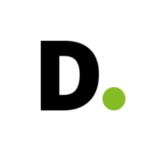
Top 4 – Global Consulting Firm (Deloitte, North America)
“Prior to when Mr. Oluwole came onboard our team, we had very little penetration into the healthcare and life science markets. Although we had products and services that could benefit the organizations in these markets, we were not able to effectively enable our sales team to attract, convert and retain clients in these spaces.
Mr. Oluwole helped in creating an enablement strategy which had two key elements. The first part was working with us to refine the key value messages of our products and services, so we could explain the value we bring to potential customers and their businesses. The second part of the enablement was to work with our business partners more directly to enable them with the sales collateral, speaker notes and skills that they needed to have impactful interactions with prospects and convert them to clients.
Within 6 months, we were able to secure multi-year projects with a number of key clients in the healthcare and life science industries. Two key projects worthy of mention are a project with 7 hospitals coming together to implement EPIC (a clinical information system) over 2-3 years; and a project with a global pharma to implement Salesforce.
Through these projects we experienced over 150% increase in our revenue from these markets and we have continued to see growth in these sectors since then.
It is very unlikely that we would have experienced this level of growth if it were not for Mr. Oluwole’s sales enablement impact.”
Global Pharmaceutical Company (Abbvie, Europe)
“We were implementing Salesforce as our Customer Relationship Management tool for improving our interaction and service to patients (our customers) who were on some of our proprietary medications. For this objective to be achieved, our patient relationship team needed to fully understand the importance of patient satisfaction as an integral part of retention and ongoing business. The team also needed to understand how the CRM tool was going to help do this.
Our first experience rolling out Salesforce was not great, so we needed to get this second phase rollout right. Mr. Oluwole came onboard to help make that happen. He led the team to first have a deeper appreciation of the key role that customer service plays in patient compliance, treatment, and health outcomes and how these ultimately drive recurring sales revenue. He also helped in leading the development of training programs aimed at helping the team use Salesforce more effectively.
After this phase of implementation was done, the team was better equipped to interact with the patients and the partners who serve the patients. This significantly increased our patient compliance which ultimately impacted their health outcomes and our recurring sales revenue. Working with Mr. Oluwole in these areas helped us achieve this. ”
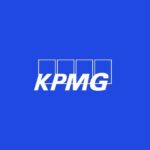
Top 4 Global Consulting Firm (KPMG, Middle East)
“We had recently started building people and change practice within our consulting firm and we had some aggressive growth targets. Our plan for achieving these targets was to hire additional consultants and use them to drive revenue with existing clients while we seek how to attract new clients.
When Mr. Oluwole came onboard, we had just 3 consultants on the team and a handful of clients on short term engagements. Mr. Oluwole helped to build important sales collaterals including solution methodologies, client credentials, workplan templates, and curated profiles of team members.
After leading the development of these collaterals, he also led efforts to socialize the content with the rest of the team. This enabled everyone to effectively deploy these collaterals in interacting with prospects.
The collaterals helped to clearly communicate our leadership in these domains and establish credibility with potential clients.
Over the space of 18 months that Mr. Oluwole worked with us we went from a handful of clients to a robust portfolio of clients. We also experienced growth in our team size as we grew from a team of 3 to a team of over 10 consultants with an average utilization rate of 75%. Since then, we have continued to grow, leveraging the sales enablement tactics and culture that Mr. Oluwole helped us build. ”
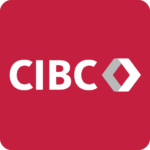
Financial Services (CIBC, North America)
“Mr. Oluwole is one of the most effective trainers I have met. We were rolling out an access and identify management system for all our workers – over 25,000 and we needed everyone to understand how this new solution was going to impact how they have access to the IT platforms and tools at the bank. With our team being very distributed across different geographies, an ineffective training could affect our ability to provide service to our customers.
Under Mr. Oluwole’s leadership, the team developed a training strategy that detailed multiple approaches and initiatives, so people have diverse ways of interacting with the new knowledge and getting enabled. Then they developed effective training materials and delivered the training programs in a way that ensured people were able to learn from through various learning styles – reading, listening, observing, and doing.
With these strategies and initiatives, the workers were enabled to start using the system adopting the new knowledge, skills and behaviours required for success.
Mr. Oluwole is able to enable a team to transition to new ways of work to achieve higher levels of success. ”
Healthcare Technology (North America)
“We were at a major inflection point in our growth journey as we were pivoting from targeting strictly the employer market to focus on healthcare payers and providers in North America. This major shift required that we change our customer value proposition and our go-to-market strategy and then enable our sales team so they can effectively execute these plans. It was around this time that Mr. Oluwole came onboard.
When he joined, he first set out to align the sales leadership team on an enablement strategy that would start delivering value immediately while evolving in detail over the long term. This strategy became the north star for all our enablement efforts. Because we were targeting complex and varied markets, the enablement approach required bite-size, focused and frequent enablement initiatives that addressed key areas of selling. Mr. Oluwole seamlessly led the delivery of these enablement initiatives.
He led the revamp of our Sales Enablement Content Management system to ensure the team could access these sales collateral and training programs on-demand, as needed.
In addition, Mr. Oluwole helped us leverage our sales reporting and analytics tools to further review our sales pipeline and results to identify enablement areas so we can be more targeted in our enablement efforts.
Over the 18 months of working with him, we have consistently seen growth in our sales revenues as our sales team has been able to close more deals and faster. Specifically, we have seen over 200% increase in our sales revenue and are on track for our first $100m annual revenue. The enablement support from Mr. Oluwole has been critical in our progress along this journey.”
– Company name can be provided on request
More detailed achievements, references and testimonials are confidentially available to clients upon request.
Client Telephone Conference (CTC)
If you have any questions or if you would like to arrange a Client Telephone Conference (CTC) to discuss this particular Unique Consulting Service Proposition (UCSP) in more detail, please CLICK HERE.
















